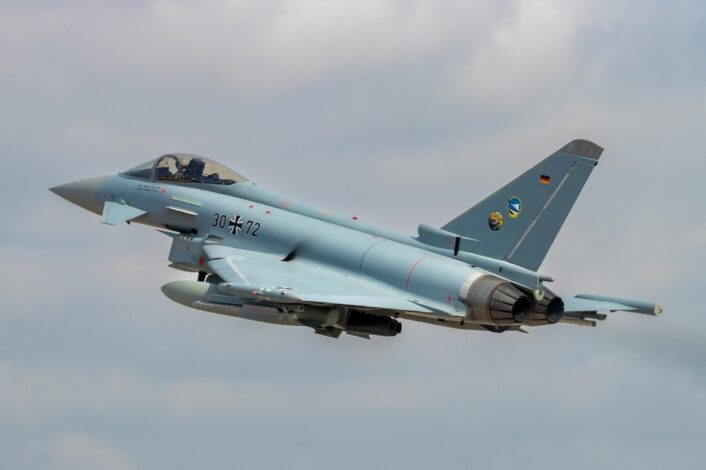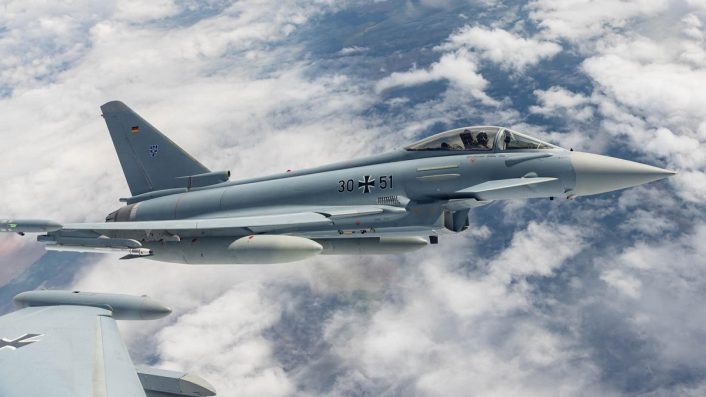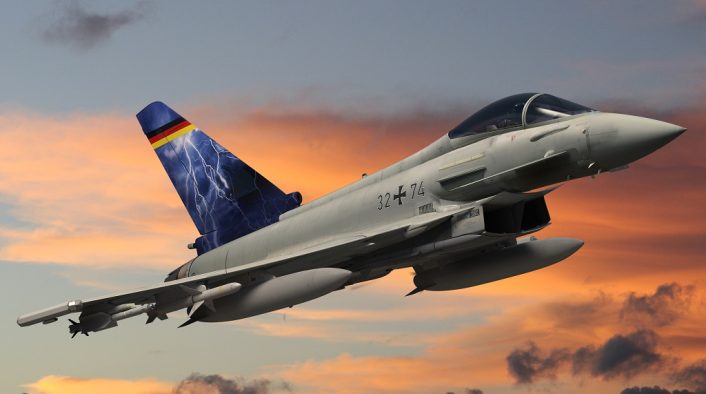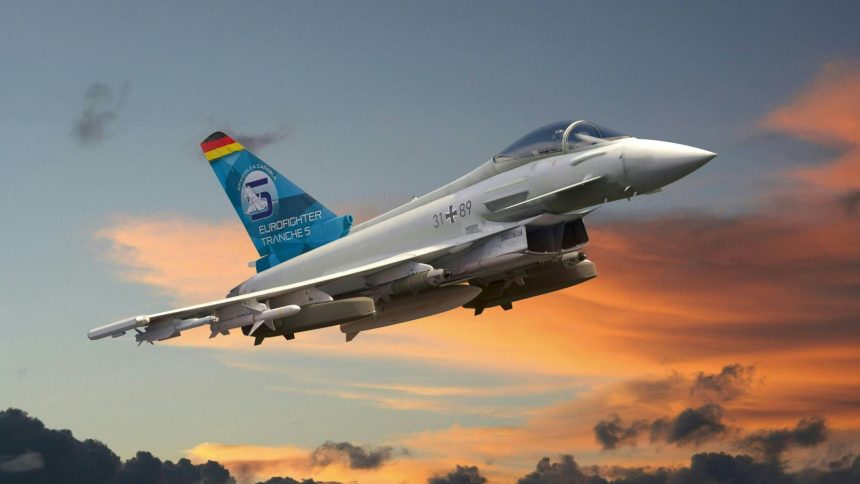The new Eurofighters, set to be delivered between 2031 and 2034, will replace part of the German Air Force’s Tornados.
Germany has signed on Oct. 15, 2025, the contract for the acquisition of 20 new Eurofighters (Germany does not use the name Typhoon) as part of the Tranche 5. The order comes a week after the Budget Committee of the German Bundestag approved the procurement on Oct. 8.
Under the contract, Airbus will produce the aircraft at its final assembly line in Manching, Germany, similarly to the other aircraft already acquired by the German Air Force. The first aircraft is scheduled for delivery in 2031, while the last will be delivered in 2034.
“Today’s signature is a proud moment and follows extensive collaboration and hard work between NETMA, Nations and our industry partners,” said Air Vice Marshal (AVM) Simon Ellard (ret.), General Manager of NETMA.
Just announced: Germany orders 20 new #Eurofighter Typhoons – also known as Tranche 5 – to strengthen air superiority.
To the full press release: https://t.co/6Lchftc4am@eurofighter pic.twitter.com/0CPi7jKFBL
— Airbus Defence (@AirbusDefence) October 15, 2025
Neither Eurofighter nor Airbus provided information about the value of the contract. However, the press release of the Ministry of Defense last week mentioned the contract is worth €3.75 billion ($4.36 billion).
Tranche 5
As we previously reported here at The Aviationist, the then German Chancellor Olaf Scholz announced during the opening of the ILA Berlin Air Show 2024 the order of the Eurofighter Tranche 5 by the end of 2025, in addition to the 38 ordered as part of Project Quadriga. Scholz described the deal as part of the commitment to maintaining and expanding arms production capacity, as well as strengthening Germany’s commitment to NATO.

“This new order is further proof of the Eurofighter’s importance to the German Air Force and the strategic role it plays in our country’s air defence and NATO capabilities,” said Mike Schoellhorn, CEO of Airbus Defence and Space.
Airbus said in its press release that it will equip the 20 Eurofighters with the latest sensors. Among these is specifically mentioned the new electronic E-Scan radar, also known as the European Common Radar System (ECRS) Mk 1 AESA (Active Electronically Scanned Array) radar.
In parallel, Airbus says it will add new electronic warfare capabilities by integrating the Saab Arexis sensor suite in existing and newly built aircraft. This modification, although it wasn’t specifically mentioned, is part of the Eurofighter EK (Electronic Combat) configuration.
These new aircraft will likely be in the Phase 4 Enhancement (P4E) configuration, also announced last year. This contains a number of new developments, including an automated sensor management capability for all Typhoon radars that will allow to exploit the capabilities of the new AESA radar to complete multiple simultaneous tasks, while reducing the pilot workload.
The package is also said to include an improved cockpit interface and enhanced Radio Frequency Interoperability (RFIO), which will improve survivability and lethality. While the development of a Large Area Display for the Typhoon has been confirmed, it is unknown at this time if it will be included in the new improved cockpit interface.
With these upgrades, the Eurofighter is planned to remain in service with the German Air Force until the 2060s. The German Ministry of Defense previously confirmed that the Eurofighters of the Tranche 5 will be used to gradually transfer the capabilities of the aging Tornado ECR (Electronic Combat and Reconnaissance).

Moreover, the Eurofighter is planned to operate alongside the Future Combat Air System (FCAS), which is scheduled to be operational from 2040. Within the FCAS ecosystem, the Eurofighter will operate in a network with both current and future crewed and uncrewed aircraft.
“The continued evolution of the Eurofighter serves as an essential technological and operational bridge to a Future Combat Air System (FCAS), ensuring a seamless transition to the next generation of air power. With these additional Eurofighters, Germany strengthens its ability to conduct surveillance of its airspace and secure NATO’s skies, supporting Germany in its role as a reliable partner for collective security,” added Schoellhorn.
Eurofighter EK
In addition to the Tranche 5, Germany has also approved a contract to continue the work on the Eurofighter EK. This variant was initially green-lighted by the German Government in 2023, after Airbus announced its development as the Eurofighter ECR (Electronic Combat/Reconnaissance) in 2019.
The Eurofighter EK is a dedicated Suppression of Enemy Air Defenses (SEAD) variant which is being developed as the successor to the Tornado ECR. Airbus will equip 15 German Eurofighters for electronic combat, which will be NATO-certified by 2030 and will then replace the Tornado ECR in the SEAD role.
The Eurofighter EK will use the AGM-88E AARGM, the Saab Arexis Electronic Warfare suite and other technologies developed by small and medium-sized enterprises and a start-up. Notably, these include an AI solution that makes it possible to analyze radar data on-board and quickly determine precise self-protection measures.

Further confirming this, the MoD said “The Eurofighter is to be optimized with the AREXIS self-protection system and corresponding air-to-ground guided missiles and further enabled for electronic warfare.” Arexis, which is equipped with high-power gallium nitride GaN AESAs and ultra-wideband receivers and Digital Radio Frequency Memories (DRFMs) and is said to be capable of neutralizing Anti Access/Area Denial (A2/AD) systems, will replace the two wingtip pods of the Eurofighter.
The development of the project, scheduled to run until 2033, requires €1.13 billion ($1.31 billion), says the MoD, while the procurement of the components is estimated at €82 million ($95 million). This confirms the previously disclosed timeline of the aircraft being fielded in the early 2030s.
It now appears that the 15 jets already planned to become Eurofighter EKs will be taken from the inventory of aircraft already in service and will be converted. The Tranche 5 aircraft, considering the MoD specifically stated they will replace the Tornado ECR, will come in the same configuration, possibly from the factory.









